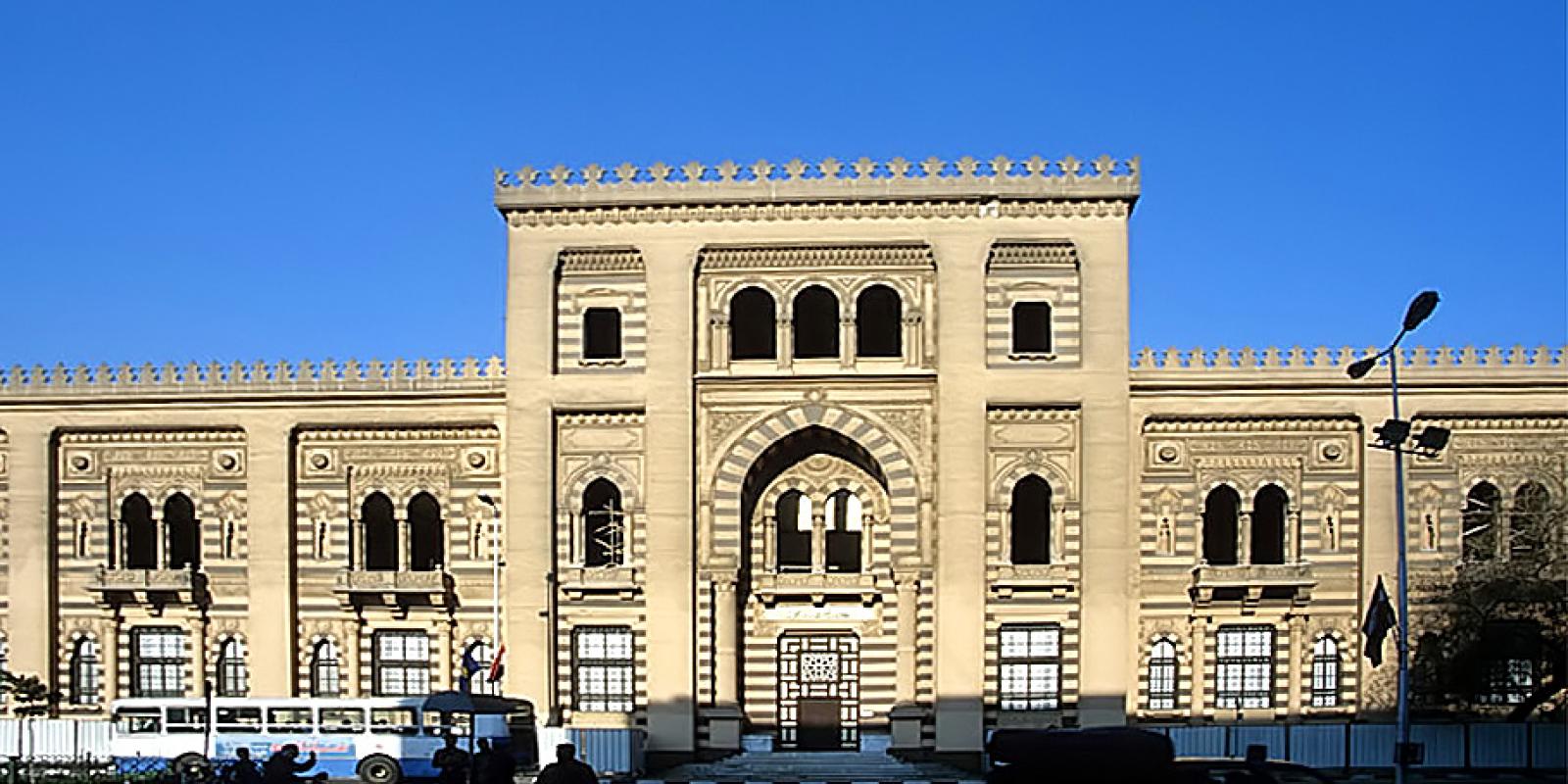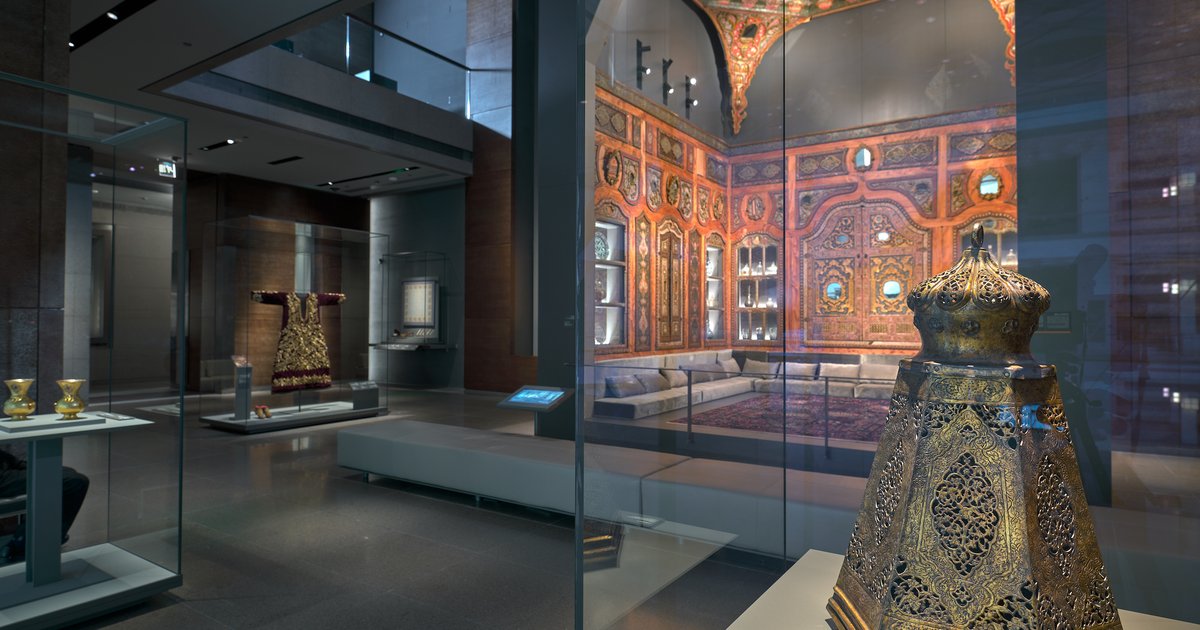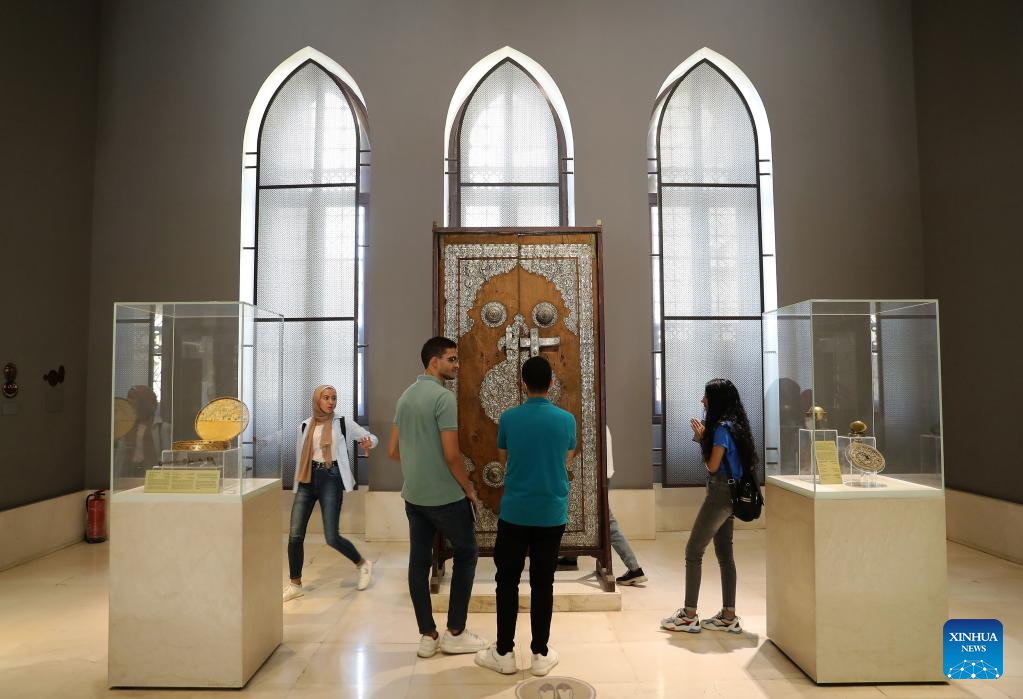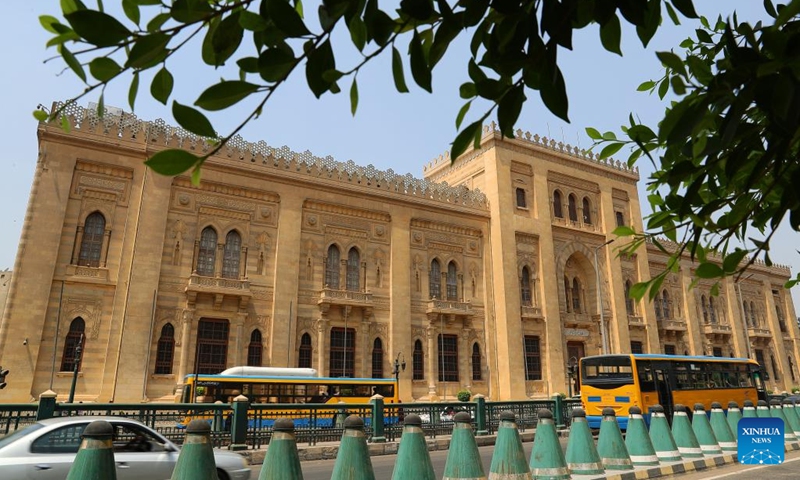Explore Islamic Art's Grandeur: Cairo's Must-See Museum

History of the Museum of Islamic Arts in Cairo
History behind the establishment of the Museum of Islamic Arts in Cairo
The Museum of Islamic Arts in Cairo was founded in the year 1881 during the reign of Khedive Tawfiq. You may find it interesting to know that the primary purpose of establishing the museum was to preserve and showcase Islamic art and culture to both locals and visitors. The initiative was taken to ensure that the Islamic civilisation's rich heritage and artistic achievements were properly documented and made accessible to the public. Over the years, the museum has evolved and expanded its collection to include a diverse range of artefacts such as ceramics, textiles, manuscripts, metalwork, and more.
Did you know that the museum is in the historic Fatimid-era building, which adds to its significance as a cultural landmark in Cairo? The museum's architecture is a blend of traditional Islamic design elements, reflecting the beauty and intricacy of the art forms it houses. Throughout its history, the Museum of Islamic Arts has played a crucial role in promoting cross-cultural understanding and appreciation for the rich artistic traditions of the Islamic world.
Significance of preserving Islamic art and culture
Preserving Islamic art and culture is essential not only for honoring the past achievements of Islamic civilizations but also for fostering a deeper understanding of our world's cultural interconnectedness. Islamic art is not just aesthetically pleasing but also serves as a testament to the intellectual, scientific, and artistic advancements made by Muslims throughout history.
By safeguarding and showcasing these artistic treasures, the Museum of Islamic Arts in Cairo contributes to the enrichment of global cultural heritage and promotes dialogue and tolerance among diverse communities.

Architectural Design of the Museum
Characteristics of the Museum of Islamic Arts building
The Museum of Islamic Arts in Cairo, established in 1881 during the reign of Khedive Tawfiq, is housed in a historic Fatimid-era building. The museum's primary aim is to preserve and showcase Islamic art and culture.
The museum's architecture blends traditional Islamic design elements, reflecting the beauty and intricacy of the art forms it houses. The building itself is a cultural landmark in Cairo, showcasing diverse artefacts such as ceramics, textiles, manuscripts, and metalwork.
Influence of Islamic architectural elements in the museum's design
The Museum of Islamic Arts in Cairo is crucial in promoting cross-cultural understanding by safeguarding and showcasing artistic treasures. The museum's establishment ensures that the rich heritage and artistic achievements of Islamic civilization are accessible to both locals and visitors. Islamic art serves as a testament to the intellectual, scientific, and artistic advancements made by Muslims throughout history.
By preserving and exhibiting these treasures, the museum contributes to the enrichment of global cultural heritage and promotes dialogue and tolerance among diverse communities.

Permanent Collections
Overview of the museum's permanent collections
The permanent collections of the Museum of Islamic Arts in Cairo encompass an array of artifacts representing various aspects of Islamic art and culture. These collections serve as a testament to the rich heritage and artistic achievements of Islamic civilization, offering visitors a glimpse into the diverse and intricate world of Islamic art.
Highlights of key Islamic artefacts and artworks on display
The museum's permanent collections include a range of key Islamic artefacts and artworks that showcase the beauty and complexity of Islamic art forms. Items such as ceramics, textiles, manuscripts, and metalwork are prominently displayed, highlighting these objects' exquisite craftsmanship and cultural significance. Visitors are treated to a visual feast of colours, patterns, and designs reflecting the depth and richness of Islamic artistic traditions.

Temporary Exhibitions
Information about temporary exhibitions at the Museum of Islamic Arts
The Museum of Islamic Arts in Cairo regularly features temporary exhibitions that offer visitors a deeper insight into specific aspects of Islamic art and culture. These exhibitions provide a unique opportunity to explore temporary collections, themes, and narratives that complement the museum's permanent displays. Visitors can further appreciate the diversity and complexity of Islamic artistic expressions through these exhibitions.
Rotation of displays and themes of featured exhibitions
The museum's temporary exhibitions rotate, ensuring visitors have access to fresh and engaging content throughout the year. Each exhibition is carefully curated to highlight different themes, periods, or regions within Islamic art history. From calligraphy to geometric patterns, from early Islamic civilizations to contemporary interpretations, the featured exhibitions aim to showcase the versatility and evolution of Islamic artistic traditions.
By offering a variety of temporary displays, the museum continues to enhance its role as a dynamic cultural hub, fostering dialogue and understanding through the exploration of Islamic art and heritage.
Educational Programs and Workshops
Educational initiatives offered by the museum
The Museum of Islamic Arts in Cairo provides a range of educational programs to enrich the visitor experience and promote a deeper understanding of Islamic art and culture. These initiatives include guided tours, lectures by experts, and interactive sessions that delve into the historical and artistic significance of the museum's collection.
By engaging with these educational opportunities, visitors can gain valuable insights into the context and symbolism behind Islamic artworks, fostering a greater appreciation for the richness of Islamic heritage.
Hands-on workshops and activities for visitors of all ages
In addition to educational tours and talks, the museum offers hands-on workshops and activities designed to appeal to visitors of all ages. These workshops cover a variety of topics, such as traditional Islamic crafts, manuscript illumination, and geometric design.
Through practical experiences, visitors can immerse themselves in the techniques and processes used in Islamic art production, gaining a deeper appreciation for the intricacy and skill involved. By participating in these interactive activities, visitors can connect with Islamic art on a personal level, fostering creativity and curiosity.

Conservation and Restoration Efforts
Importance of conservation and restoration in preserving Islamic artefacts
Conservation and restoration play a crucial role in preserving the rich cultural heritage encompassed within Islamic artefacts. These efforts ensure that the beauty and historical significance of these artefacts is safeguarded for future generations to appreciate and learn from.
Insight into the museum's conservation practices and techniques
The Museum of Islamic Arts in Cairo employs a variety of conservation practices and techniques to preserve its collection of Islamic artefacts. These include preventive conservation measures, such as controlled environmental conditions, regular maintenance, and specialized restoration techniques carried out by skilled conservators.
By employing these practices, the museum is able to maintain the integrity of its artefacts while ensuring visitors can enjoy them for years to come.

Digital Initiatives and Online Resources
Online resources and virtual tours provided by the Museum of Islamic Arts
The Museum of Islamic Arts in Cairo offers a range of online resources and virtual tours to provide you with access to its collection from anywhere in the world. Through virtual tours, you can explore the museum's galleries and exhibitions, gaining insights into Islamic art and culture from the comfort of your home.
Additionally, the museum's website features digital archives, educational videos, and interactive tools to enhance your understanding and appreciation of Islamic artefacts.
Digital platforms for accessing information and engaging with the museum
To further engage with the Museum of Islamic Arts, you can utilize various digital platforms to access information and connect with the institution. The museum's social media channels provide updates on upcoming events, behind-the-scenes glimpses, and interactive content that allows you to interact with the museum community.
Through online forums and discussion groups, you can also share your insights and connect with others who share your interest in Islamic art and heritage.

Visitor Experience and Amenities
Facilities, amenities, and services available to visitors
When visiting the Museum of Islamic Arts in Cairo, you can expect a range of facilities, amenities, and services to enhance your experience. The museum offers guided tours led by knowledgeable staff who provide insights into the history and significance of the artefacts on display.
Additionally, there are audio guides available in multiple languages to cater to diverse visitors. The museum's gift shop allows you to take home unique souvenirs and replicas of Islamic art pieces, providing a tangible connection to your visit.
Accessibility features and visitor experience enhancements
The Museum of Islamic Arts is committed to making its exhibitions and facilities accessible to all visitors. The museum is equipped with elevators and ramps to ensure wheelchair access throughout the premises. Braille guides and tactile models are available for visitors with visual impairments, allowing them to engage with the exhibits through touch and exploration.
Additionally, there are designated rest areas and seating spots for visitors to take breaks and recharge during their visit.
